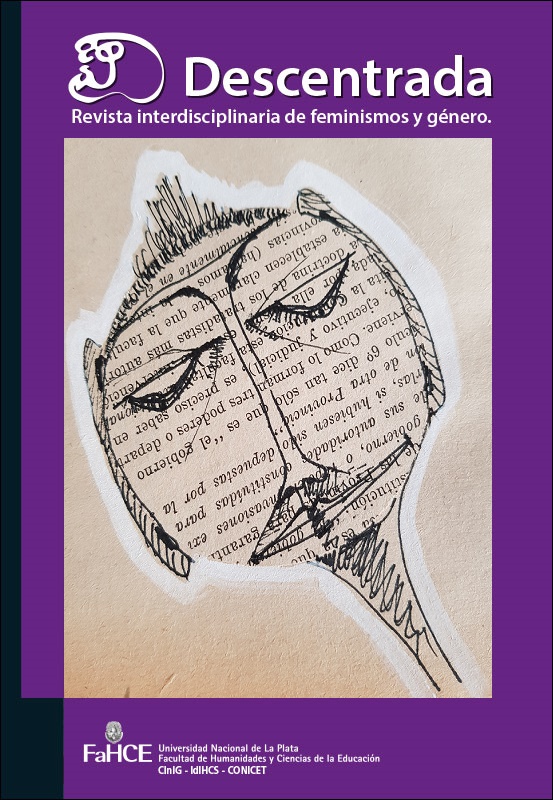Critical analysis of feminist identity in the song “Lisistrata” by the feminist rapper Gata Cattana
Main Article Content
Abstract
This article is a microdiscursive analysis of the song "Lisístrata" by the Spanish rapper Gata Cattana (1991-2017). It uses a methodology from Critical Discourse Studies, the theory of intersectionality and S. Lanser's feminist and queer narratology. Macro and microdiscursive dimensions are taken into account, as well as the analysis of communal, authorial and queer voice. On the one hand, it seeks to unravel the social implications that this dissident enunciation brings with it in the identity construction of the author herself and the public to which she appeals. On the other hand, the aim is to describe and analyse Gata Cattana's contribution to re-signifying Spanish rap.
Downloads
Article Details
This work is licensed under a Creative Commons Attribution 4.0 International (https://creativecommons.org/licenses/by-nc-sa/4.0/deed.es).
References
Arkana, Keny (2011). Marseille. En L’Esquisse 2 [CD]. París: Because music.
Cattana, Gata (2014). Tributo. [Grabada por VentanalRecords].
Cattana, Gata (2015). Lisístrata. [Grabada por Wiloo]. En Anclas [EP]. Madrid: La cucaracha estudios.
Cattana, Gata (2017). Banzai [CD]. Madrid: D.Unison.
Collins P. y Birge S. (2019). Interseccionalidad e identidad. En Interseccionalidad,(pp. 113-133). Madrid: Morata.
Despentes, V. (2006) King Kong Théorie. París: Editions Grasset et Fasquelle.
Dijk, T. Van (2011). Sociedad y discurso. Barcelona: Gedisa.
Frith, S. (2001). Hacia una estética de la música popular. En Cruces Villalobos, F. (coord.) Las culturas musicales: lecturas de etnomusicología, (pp. 413-436). España: Editorial Trotta.
Halberstam, J. (1998) Female Masculinity. Barcelona-Madrid: Egales.
Lane, Rebeca (2014). Mujer lunar. [Grabado por Armas, Julio]. En Canto. Guatemala: Mi Cuarto Estudios (producción independiente).
Lanser, S.S. (1992). Fictions of Authority: Women Writers and Narrative Voice. Nueva York: Cornell University Press.
Lanser, S. y Warhol W. (2015). Narrative Theory Unbound: Queer and Feminist Interventions. Columbus: Ohio State University Press.
Lanser, S. (2018). Queerring narrative voice. Textual practice, 32(6), 912-937.
Mafalda y Rebeca Lane (2018). Las que faltaron [Grabada por Laguna, A. y Boneet, J.]. RL Studios.
Martínez Vizcarrondo, D.E. (2011). Estrategias lingüísticas empleadas por los raperos/reguetoneros puertorriqueños. Enunciación, 16(2), 31-47.
Pardo Abril, N. G. (2012). Análisis crítico del discurso: Conceptualización y desarrollo. Cuadernos de lingüística hispánica, (19) 41-62.
Spivak, G.C. (1993). Can the subaltern speak? En Chrisman, L. y Williams P. (Ed.), Colonial discourse and post-colonial theory:a reader, (pp. 66-111). Birmingham: Harvester Wheatsheaf.
Tertuliano, Quinto Septimio Florente (s.f.) De cultu feminarum. 1.1. (s.d)
Tijoux, Ana (2014). Antipatriarca. En Vengo [CD]. Los Ángeles: National Records
Vila, P. (1996). Identidades narrativas y música: una primera propuesta para entender sus relaciones. Trans: Transcultural Music Review, 2. DOI: http://www.sibetrans.com/trans/articulo/288/identidades-narrativas-y-musica-una-primera-propuesta-para-entender-sus-relaciones.
